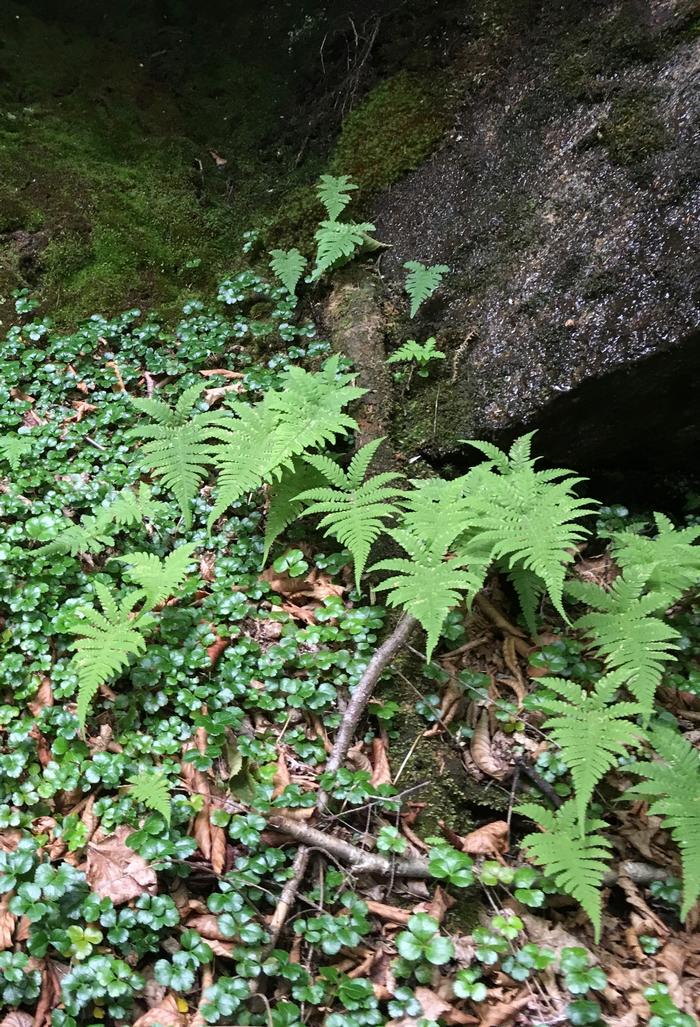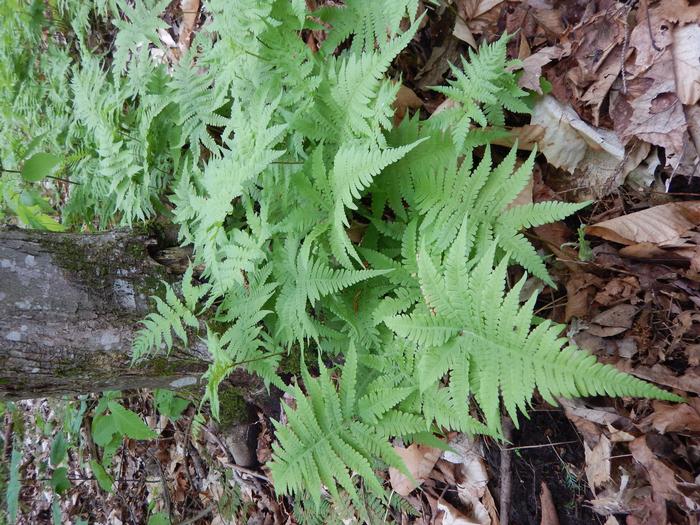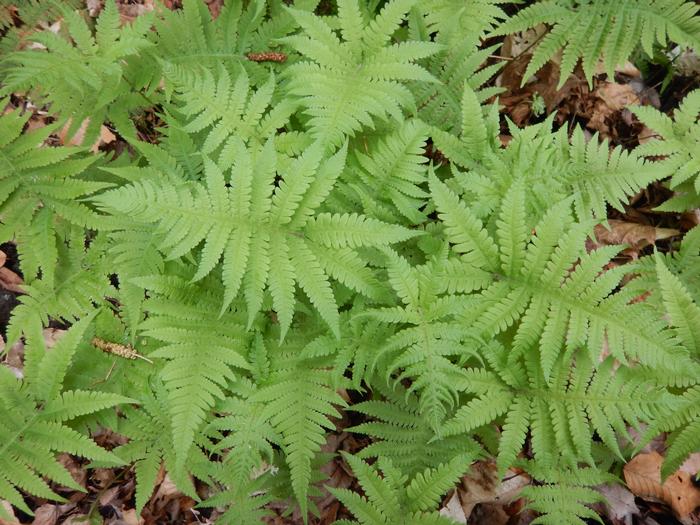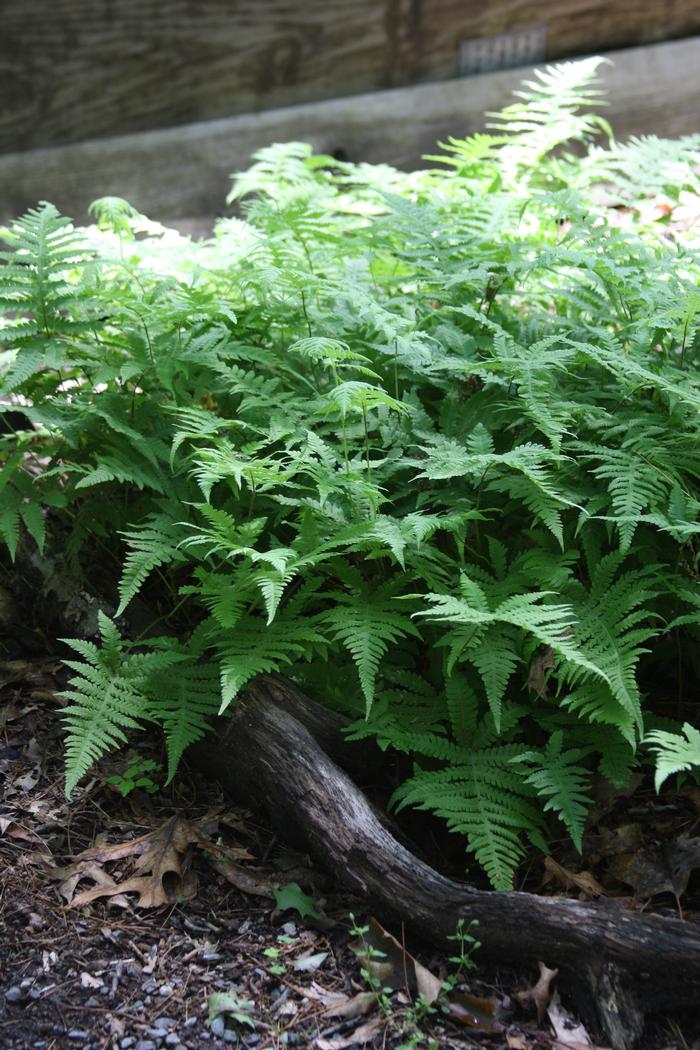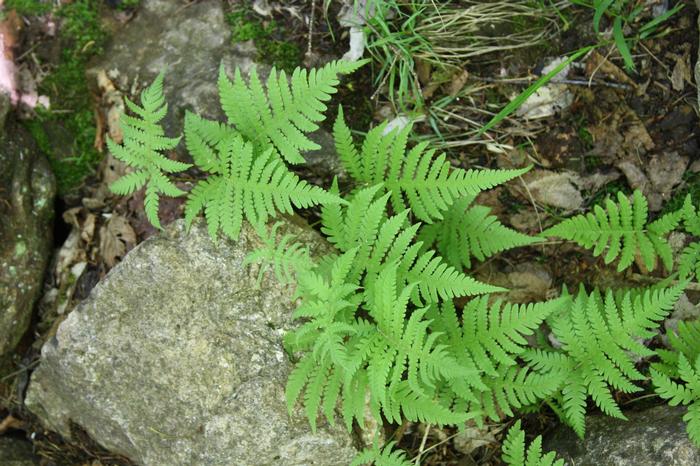General Description
Bloom Description
No flowers, the fronds are slow to appear in spring, usually arising in late May. The fronds are decidous, but turn a beautiful yellow color in fall when found in a more open setting.-
Growth Habit & Shape: When first planted the fern remains solitary for several years. Once established it spreads to form colonies in open soil. This plant is not an aggressive competitor but forms a nice mass in the garden.
Soil Preferences: This plant prefers rich, humusy loam that is slightly acidic and evenly moist. The plant is often found near, but not in, wetlands.
Root Description: Thin, long-creeping rhizome. Ferns have different types of roots-- those with long creeping rhizomes produce fronds (leaves) at nodes found every inch or so along the root length. Although a long, creeping species, the foliage on this fern is small and the growth is compact (see Mickel 1994, in references).
Garden Uses: Long beech fern is great as a ground cover among other plants. Since it is not aggressive and needs time to become established, allow it some space and room to grow at first. It can be used close to a path, to tie other garden elements together, and as a nice, slow spreading-fern providing a soft visual resting-place.
Best Management & Maintenance: Once planted to not disturb the plant, allow it to become established so it can begin to spread. Well established colonies are easily divided as long as plenty of root material accompanies the transplant. The best time for transplant is early spring prior to frond emergence. If the plant begins to occupy more territory than desired, it is easily removed from the garden by digging plants at the edge of the clump.
Common Problems: typically none if planted in appropriate conditions.
Benefits
Ornamental Value: Valued for its exceptional foliage and growth habit. Ferns are excellent in gardens to provide a resting place for the eye among many diverse wildflower species. This low-growing fern makes an excellent ground cover and its form and texture is perfect among delicate plants. Long-beech fern can be used as a specimen or to form masses over time.
Wildlife Benefits: Cover for smaller amphibians and rodents.
Other Practical/Environmental Benefits: Great shade plant for acidic soils.
Use in place of:
Ecology
Habitat & Ecosystem: Per Flora North America, Phegopteris connectilis can be found In moist, strongly- to moderately-acid soil, or on rocks in shaded crevices.
Response to Disturbance: We find it does not like to be disturbed and does not readily invade after a disturbance. Many fern species have adapted specific mechanisms to grow in so-called "microsites," locations with very specific nutrient and humiditiy conditions. As a terrestrial plant, Phegopteris connectilis is slow to establish, but does establish eventually if soil and light conditions are amenable. When it grows as a lithophyte (plant that can grown on rocks), re-establishment of communities after disturbance is rare and slow due to this fern's (and others') exacting reproductive requirements and highly derived growth adaptations, regardless of the presence of spores latent in the soil (see Rydgren et al. 1998, listed in references). For terrestrially-growing individuals, following any significant environmental change (light, heat, humidity), plants may require a full growing season for new fronds to become modified to meet the demands of the newly-imposed conditions (see article by C.N. Page, listed in references).
Native State Distributions:
Canada: AB, BC, LB, MB, NB, NF, NS, NT, ON, PE, QC, SK, YT
USA: AK, CT, DE, IA, ID, IL, MA, MD, ME, MI, MN, MT, NC, NH, NJ, NY, OH, OR, PA, RI, TN, VT, WA, WI, WV
Wetland indicator status: FACU
References
- GoBotany
- CT Botanical Society
- Leslie Duthie, Personal Communication
- Brooklyn Botanical Garden
- Flora of North America
- NatureServe. 2019. NatureServe Explorer: An online encyclopedia of life [web application]. Version 7.1. NatureServe, Arlington, Virginia. Available http://explorer.natureserve.org. (Accessed: February 13, 2020 ).
- Page, C. N. (2002). Ecological strategies in fern evolution: a neopteridological overview. Review of Palaeobotany and Palynology, 119(1-2), 1–33.
- Rydgren, K., Hestmark, G., & Økland, R. H. (1998). Revegetation following experimental disturbance in a boreal old-growth Picea abies forest. Journal of Vegetation Science, 9(6), 763–776.
Return to Top
